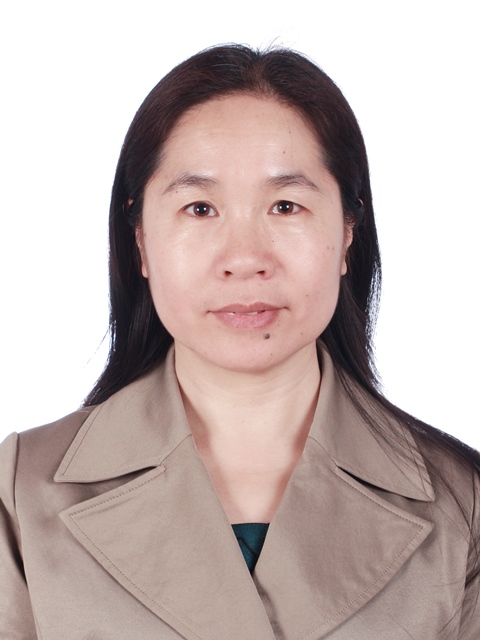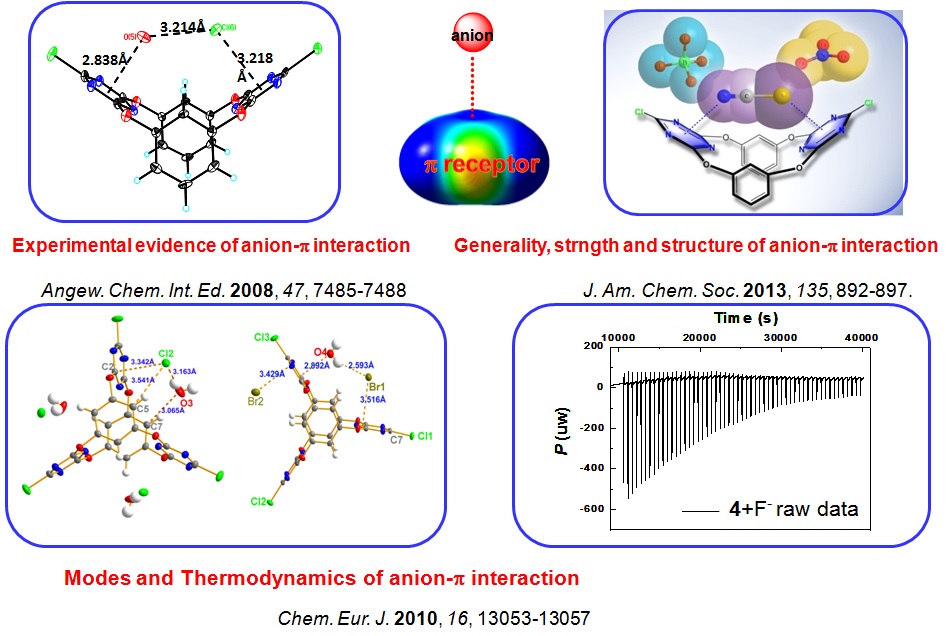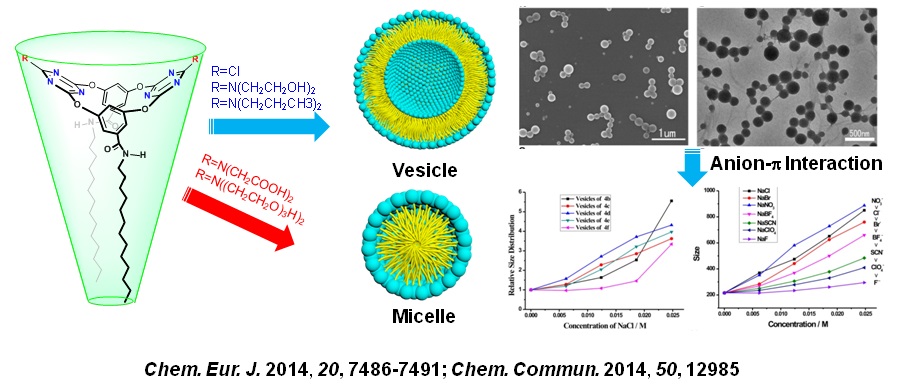 |
|
王德先 研究员
电话:86-10-62565610 传真:86-10-62554449 |
学术经历
1987-1991,兰州大学学士学位
2000-2003,河北大学博士学位
2002-2004,韩国仁荷大学访问学者、博士后
2004-至今,中国科学院化学研究所,先后任副研究员、课题组长、研究员
研究方向
超分子化学是研究以非共价键弱相互作用力键合起来的有序、并具有特定功能的分子集合体的化学,分子间非共价弱相互作用是超分子化学的核心内容,同时也是化学、生命科学和材料科学等领域的核心问题。从历史的角度来看,对每一种非共价弱相互作用如氢键、π-π堆积、亲脂疏水、卤键、阳离子-π作用等的本质和规律的研究与认识都极大促进了化学、超分子化学、材料科学和生命科学等学科和领域的发展。可以说,新型非共价相互作用为加深我们对物质世界的认识,推动化学及相关领域的发展提供新的契机。
本课题组专注于超分子化学及相关研究领域的核心问题,开展以新型的作用模式为理念、新型主体分子为基础的超分子识别与组装研究。具体研究方向包括:
1. 超分子化学
2. 分子识别、组装与功能
3. 生物催化
Selected Work
1. Anion-π interaction: Evidence and Generality

2. Anion-π directed Recognition and Self-assembly


Selected Publications
1. Xu, R.-B.; Wang, Q.-Q.;* Ao, Y.-F.; Li, Z.-Y.; Huang, Z.-T.; Wang, D.-X.* “Anionic head containing oxacalix[2]arene[2]triazines: synthesis and anion-π-directed self-assembly in solution and solid state”, Org. Lett. 2017, 19, 738-741.
2. Fa, S.-X.; Wang, X.-D.; Wang, Q.-Q.; Ao, Y.-F.; Wang, D.-X.;* Wang, M.-X.* “Multiresponsive vesicles composed of amphiphilic azacalix[4]pyridine derivatives”, ACS Appl. Mater. Interfaces, 2017, 9, 10378-10382.
3. Zhang, Y.; Ao, Y.-F.; Huang, Z.-T.; Wang, D.-X.;* Wang, M.-X.;* Zhu, J.* “Chiral phosphoric acid catalyzed asymmetric Ugi reaction by dynamic kinetic resolution of the primary multicomponent adduct”, Angew. Chem. Int. Ed. 2016, 55, 5282-5285.
4. He, Q.; Ao, Y.-F.; Huang, Z.-T.; Wang, D.-X.* “Self-assembly and disassembly of vesicles as controlled by anion-π interactions” Angew. Chem. Int. Ed. 2015, 54, 11785-11790.
5. Ao, Y.-F.; Wang, D.-X.; Zhao, L.; Wang, M.-X.* “Synthesis of quaternary-carbon-containing and functionalized enantiopure pentanecarboxylic acids from biocatalytic desymmetrization of meso-cyclopentane-1,3-dicarboxamides”, Chem. Asian J. 2015, 10, 938 -947.
6. He, Q.; Huang, Z.-T.; Wang, D.-X.* “Regulated assemblies and anion responsive vesicles based on 1,3-alternate oxacalix[2]arene[2]triazene amphiphiles”, Chem. Commun. 2014, 50, 12985-12988.
7. He, Q.; Han, Y.; Wang, Y.; Huang, Z.-T.; Wang, D.-X.* “Size-regulable vesicles based on anion-π interactions”, Chem. Eur. J. 2014, 20, 7486-7491.
8. Ao, Y.-F.; Wang, D.-X.; Zhao, L.; Wang, M.-X.* “Biotransformations of racemic 2,3-allenenitriles in biphasic systems: synthesis and transformations of enantioenriched axially chiral 2,3-allenoic acids and their derivatives”, J. Org. Chem. 2014, 79, 3103-3110.
9. Wang, D.-X.*; Wang, M.-X.* “Anion-π interactions: Generality, binding strength and structure” J. Am. Chem. Soc. 2013, 135, 892-897.
10. Wang, D.-X.;* Fa, S.-X.; Liu, Y.; Hou, B.-Y.; Wang. M.-X.* “Anion-directed assembly of a rectangular supramolecular cage in the solid state with electron-deficient phenoxylated oxacalix[2]arene[2]triazine” Chem. Coummn. 2012, 48, 11458-11460.
11. Li, S.; Fa, S.-X.; Wang, Q.-Q.; Wang, D.-X.*; Wang, M.-X.* “Synthesis and structure of oxacalix[2]arene[2]triazines of an expanded π-electron-deficient cavity and their interactions with anions” J. Org. Chem. 2012, 77, 1860-1867.
12. Wang, D.-X.*; Wang, M.-X.* “Anion recognition by charge neutral electron-deficient arene receptors” Chimia, 2011, 65, 939-943.
13. Chen, Y.; Wang, D.-X.*; Huang, Z.-T.; Wang, M.-X.* “Ion pair receptors based on anion-π interaction” Chem. Commun. 2011, 47, 8112 - 8114.
14. Wang, D.-X.*; Wang, Q.-Q.; Han, Y.; Wang, Y.*; Huang, Z.-T.; Wang, M.-X.* “Versatile anion-π interactions between halides and a conformationally rigid bis(tetraoxacalix[2]arene[2]triazine) cage and their directing effect on molecular assembly” Chem. Eur. J. 2010, 16, 13053-13057.
15. Wang, D.-X.; Zheng, Q.-Y.; Wang, Q.-Q.; Wang, M.-X.* “Halide recognition by tetraoxacalix[2]arene[2]triazine receptors: Observation of concurrent non-covalent halide-π and lone-pair electron-π interactions in host-halide-water ternary complex in the solid state” Angew. Chem. Int. Ed. 2008, 47, 7485-7488.

